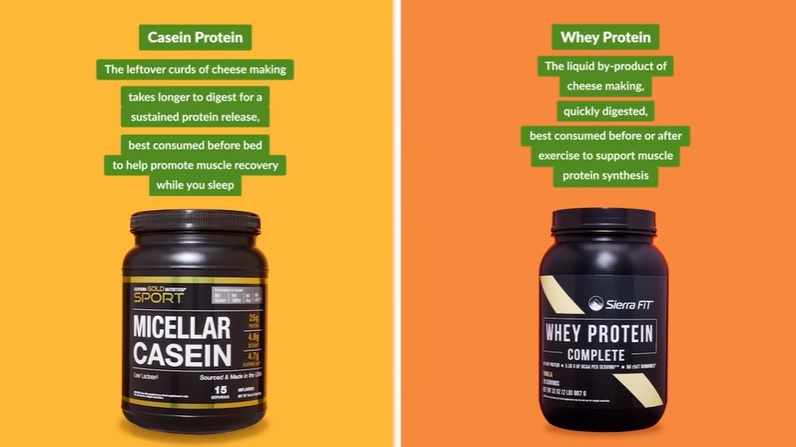Blog

Understanding the Differences Between Whey and Casein Protein Powders
Protein shakes are popular supplements among active individuals and those who prioritize healthy living. Whey and casein protein powders are two of the most commonly used supplements due to their ease of use and ability to boost daily protein intake.
Protein is essential for building and repairing muscle, making it a crucial nutrient for individuals who work out regularly. Additionally, protein is necessary for maintaining body weight and composition.
In this article, we will discuss the main differences between whey and casein proteins, their variations, when to consume each, and how to use them.
Whey protein is derived from the liquid by-products of cheese production and is digested quickly by the body, making it an ideal supplement for supporting muscle protein synthesis. There are three main types of whey protein powders, each with varying levels of processing and digestibility: whey concentrate, whey protein isolate, and whey protein hydrolysate.
Casein protein is also derived from cheese production, but it is digested more slowly than whey protein, making it great for sustained protein release. The two main types of casein protein are micellar casein and hydrolyzed casein. However, research on the differences between casein protein variations is limited.
The main difference between whey and casein protein is their digestion rate. Whey protein is digested quickly, while casein protein is digested slowly. This difference dictates when each supplement should be consumed for optimal results. Whey protein is best consumed after a workout or in the morning when the body needs an influx of protein quickly, while casein protein is ideal for sustained protein release throughout the day.
Our choice of Casein : Six Star, Elite Series, Casein Protein, Triple Chocolate, 2 lbs (907 g)
Our choice of Whey: Labrada Nutrition, ISO Whey, 100% Whey Protein Isolate, Chocolate, 5 lb (2268 g)

Comments (0)